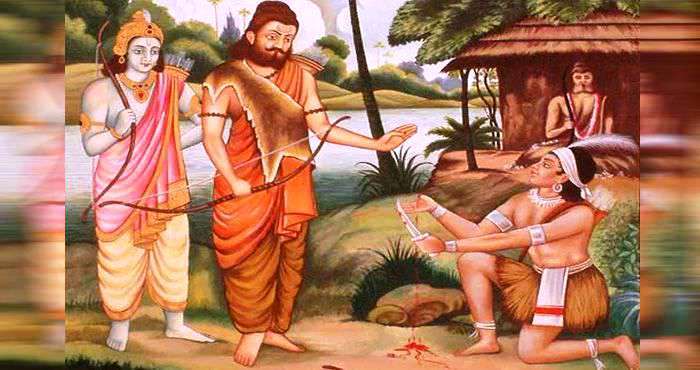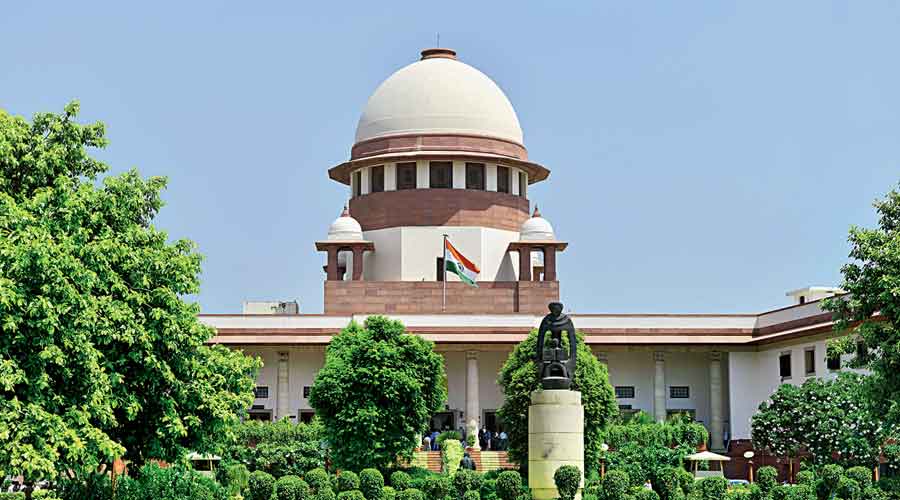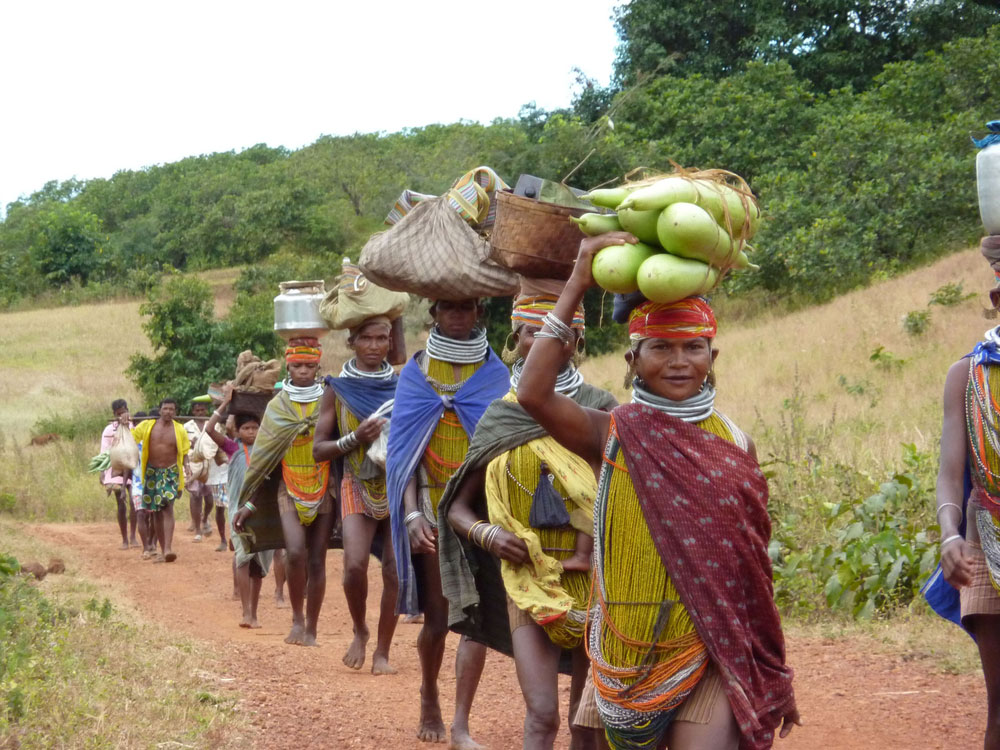It is indeed ironic that we are still not seized of the fact that besides the Right and the Left streams of criticism and discourse, there also exists a third stream called the Bahujan stream. The Left is a recent ideological stream, whereas both the material and metaphysical ideological streams have existed in India since ancient times. We may also call them Vedic and non-Vedic schools of thought. From this perspective, the Left-stream would be the third stream. But today, while both the Right and Left streams are widely recognized, the Bahujan stream is acclaimed as the third stream. This third stream is neither against religion nor fearful of it. It is not even against the Right or the Left.
Thus, due to a lack of understanding about this stream, the Leftists, who themselves participate enthusiastically in Durga Puja in Bengal, not only reject the Bahujan myths but also ridicule them. On the other hand, right-wing Hindus are upset by them. These differing reactions to Bahujan myths are indeed interesting. In 2016, the observance of Mahishasur Martyrdom Day by the Bahujan community had triggered an upheaval in Indian Parliament. Hindutva supporters are not getting agitated over Bahujan myths without reason. They know very well that in the myths, Bahujan heroes resist Brahmanism and Vedic culture. They inspire Shudras to rise in rebellion. Hence, if they are not stopped, they will turn out to be a threat to Hindutva.

In his Riddles in Hinduism, Dr Ambedkar has raised a vital question: Why did Vedic women not fight a single war? Why did only the women of the Puranas fight all the wars? Next, he also asks: Why did the Puranas give the status of Devi (goddess) only to the woman who had killed the Asuras? These questions establish that there was a major conflict. Therefore, I agree partially with those who say that myths are merely products of imagination, devoid of real characters. It is true that they are not real characters. Even in movies, novels and short stories, the characters are not real, the storylines are concocted, but the narrated events are based on real life.
Can we deny the reality portrayed in Premchand’s short stories? Therefore, myths may not be historical, but the historical reality depicted in them cannot be overlooked. What is the basis of Hindu culture and festivals in India? All of them are based on myths only. We accept that Mahabharata is an epic and all the characters in it are fictitious. We also accept that their birthplaces and scenes have been fabricated. Still, even if we rule out the historicity of these incidents, we cannot root out the entire Hindu culture. But featuring Eklavya or Draupadi, the characters of the same era, as rebels within the system, vexes the Hindutva forces.
If we feature Shambuk as a rebel, then Shambuk becomes an offending myth for them. If Eklavya and Shambuk are considered myths, then are not Krishna, Dronacharya and Ram the same? How did they become historical and real then? In the Mahabharata and Ramayana, the rebellion of Eklavya and Shambuk has not been depicted because the opposition doesn’t figure in them. Then isn’t it necessary to tell the masses about this opposition? Can events be believed to take place so tacitly? In a struggle, does the other party surrender by saying, “I am ready to be humiliated, my body may be severed and I agree to get killed by you – come, kill me for I will go to heaven if I die at your hands”? Doesn’t it sound as a vanquisher’s version? These epics have not brought forth the Bahujan heroes’ version. This Bahujans have no option but to do it themselves. Bahujan heroes were not cowards to surrender or plead for their death. They have been betrayed, treated immorally and unjustly. They have been victim of crime.

There are two noteworthy points. First, why do Hindus lay more emphasis on their myths? When they say that plastic surgery originated in India, aviation technology is present in the Vedas; when they suggest that Ram’s name is great, to the extent that the stones on which the apes engraved his name floated in the sea, enabling Hanuman to build a monumental bridge; and when they claim that their sages and saints were omniscient, aware of the past, present and future – their objective is to portray Hindus as the most knowledgeable and empowered. It was on the basis of myths that they concocted the story of Ramlala’s birth in Ayodhya and initiated such a huge temple movement so that they could grab power. From time to time, they keep on concocting all kinds of myths. Sometimes they give milk to Ganesha’s idol. Overnight, the entire Hindutva supporter community lines up to feed Ganesha milk. They are not out of their minds when they instigate violent agitations to keep the myths of Durga and Padmavati alive. By doing so, they keep alive their hostility towards their dissenters – the Bahujans and Muslims.

The second thing that the Bahujans need to understand, which Dalit intellectuals are often unwilling to realize, is that the whole Dalit movement in India has drawn its strength from myths. The denial of this fact will mean the denial of the origin and history of the Dalit discourse. Firstly, I would refer to Babasaheb Ambedkar. The biggest laboratory in which Hindu myths are concocted and exercised to spread violence across the country is in Nagpur. The head of this laboratory annually releases guidelines to Hindus on the day of Dussehra in Ramlila Maidan, Nagpur. He strengthens their faith in all Hindu myths and stirs them up to protect Hindutva. Babasaheb chose Nagpur and the day of Dussehra for his initiation into Buddhism. He correlated it with Emperor Ashoka’s “Dhamma-Vijay” and named it “Vijaya Dashami”. Not only did he start the renaissance of Buddhism in India but also propounded 22 pledges to newly converted Buddhists, which put an end to their faith in Hindu myths. This, however, took place during the last days of Babasaheb. But, when he started the “Direct Action Movement”, including the Mahad and Nasik Satyagrahas, in the third decade of the last century, he used the Gita validate the “action”. He referred to the context where Arjun expresses to Krishna his inability to fight against his kin on the battleground. Then, Krishna tells him that he should look at them as unjust people who unfairly usurped his rights; it is, therefore, necessary for him to fight for justice. Babasaheb said, “The Untouchables too will have to fight against the Hindus since they also have done injustice to the Untouchables and suppressed their rights.” Thus Babasaheb adopted the Hindu myth itself as a weapon against Hindus.

Here, it is important to remember Mahatma Phule’s Gulamgiri, in which he fashioned his ideological weapon out of myths. In his book, Mahatma Phule has done a logical analysis of all the myths about Avtarvad (the concept of incarnation), created by the Brahmins. This revitalized the Bahujans for a new discourse. Despite the repudiation of the Aryan Invasion theory by Babasaheb, we cannot deny that Brahmanism rests on it, due to which the Brahmin enjoys veneration from all and is the master of all in the Hindu culture. Hence, Gulamgiri assumes great importance in resistance to this theory.
In the Hindi belt, especially in Uttar Pradesh, Swami Acchutananda, Chandrika Prasad Jigyasu and Lalai Singh were the most notable founders of the Dalit movement. The Dalit awakening against Brahmanism happened due to their plays on Shambuk, Eklavya, and Naag Yagya. It is only after reading Jigyasu’s books – Ishwar aur Unke Gudde, Shiv Tatwa Prakash and Ravan Aur Uski Lanka – that I was inclined towards Dalit writing.
We derived our strength from the Bahujan writers of that time who, by presenting the antithesis of Hindu myths, designed an ideological weapon for the Bahujan movement. It was this movement that shaped us as thinkers and writers. We did not become writers by reading Marx. In fact, then, we hadn’t come across his thoughts yet. Even when we got our hands on his text, it was still very complex for us. I am grateful to Rahul Sankrityayan, whose book Bhago Nahi, Badlo facilitated our acquaintance with the concept of class struggle.
But that was an epoch when humiliation pricked us more than poverty. We suffered not because we were poor, but because we were Dalits. Was Eklavya’s thumb cut due to his poverty? Was Shambuk beheaded and Karna humiliated because they were poor? None of these questions has ‘yes’ as the answer. Therefore, the entire Dalit movement in the Hindi belt was born of the re-rendition of myths. We have to embrace it as our weapon of resistance against Hindutva.
Translation: Devina Auchoybur; copy-editing: Lokesh/Anil
Forward Press also publishes books on Bahujan issues. Forward Press Books sheds light on the widespread problems as well as the finer aspects of Bahujan (Dalit, OBC, Adivasi, Nomadic, Pasmanda) society, culture, literature and politics. Contact us for a list of FP Books’ titles and to order. Mobile: +917827427311, Email: info@forwardmagazine.in)
The titles from Forward Press Books are also available on Kindle and these e-books cost less than their print versions. Browse and buy:
The Case for Bahujan Literature
Dalit Panthers: An Authoritative History






